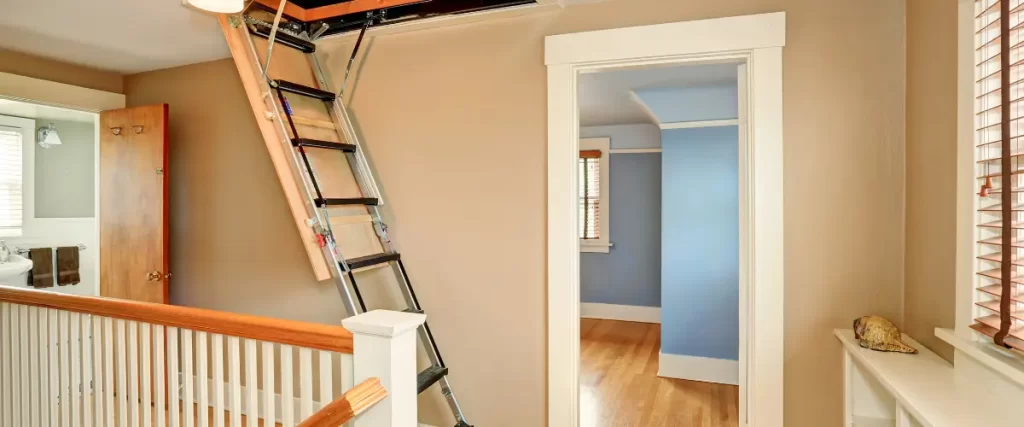If you live in a historic home in downtown Cary or Raleigh, you already know—there’s a certain charm you just can’t find in new builds. From original hardwood floors to detailed trim and tall, narrow windows, these homes tell a story. But what happens when you need more space and start eyeing the attic?
It’s a common thought: “That unfinished attic could be the perfect guest suite, home office, or even a cozy primary bedroom.” And while it might be possible, there’s a very specific road you need to walk—one that respects not just the structure of your home but the historic preservation rules that protect the entire neighborhood.
Let’s dive into what you need to know if you want to finish your attic in a historic home in Cary or Raleigh without ending up in hot water with the local preservation commission.

Why Attic Renovations Are Tricky in Historic Districts
Converting an attic in a historic home isn’t just about insulation and floor joists. You’re working with a structure that may be over 100 years old and located in a district protected by state or local preservation ordinances.
In downtown Cary and many parts of downtown Raleigh—including Oakwood, Boylan Heights, and Mordecai—you may need approval from a local Historic Preservation Commission (HPC) before making any changes to your attic, especially if those changes alter the exterior.
So even though you’re working inside the home, things like:
- Dormer additions
- New windows or skylights
- Chimney removal
- Roofline alterations
…can all trigger preservation concerns. And trust us, you don’t want to be that homeowner who installs a dormer before getting a Certificate of Appropriateness (COA).
Understanding Historic District Rules in Cary & Raleigh
Let’s break it down by city so you know what you’re dealing with.
Cary’s Historic Preservation Rules
Downtown Cary has a National Register Historic District, but it’s not a local historic district—meaning it doesn’t automatically regulate private renovations. However, if your home is a locally designated landmark, your project may need review by the Town of Cary Historic Preservation Commission.
Check your designation here:
👉 Cary Historic Properties Places
Raleigh’s Historic Preservation Guidelines
Raleigh has multiple local historic overlay districts (HODs) and its Historic Development Commission (RHDC) oversees any exterior changes to contributing properties.
You can look up your home here:
👉 Raleigh Historic Properties Search
If you’re in a local HOD and your attic renovation includes dormers, new rooflines, or visible window changes—you’ll need a COA from the RHDC before any permits can be issued.

What You Can Do When Finishing an Attic in a Historic Home
Good news: You can still finish your attic in most cases—you just have to work smart, plan ahead, and sometimes make compromises that preserve your home’s character.
Here’s what usually is allowed (even in regulated districts):
Interior-Only Work (No Exterior Changes)
You can typically:
- Add insulation and drywall
- Reinforce floor joists
- Install non-visible HVAC systems
- Finish flooring
- Add non-egress lighting
- Build interior partitions
These changes don’t require RHDC review unless they alter your exterior appearance.
Code-Compliant Windows & Egress (If Subtle)
If you need egress for a habitable attic, a skylight or side-facing window that’s not visible from the street may be allowed—with approval.
Dormers that match the home’s architectural style may be approved on a case-by-case basis.
Reversible Changes
Preservation staff love anything that can be undone in the future. So if you’re adding walls or flooring in a way that won’t destroy original plaster, framing, or historic detailing, you’ll be in better shape during review.
Raleigh & Cary Code Requirements for Attic Conversions
Regardless of historic rules, you still need to meet modern residential building code if you want your attic to be classified as habitable space.
The Basics:
- Minimum ceiling height: 7 feet over at least 50% of the space
- Egress window: 5.7 sq. ft. of clear opening, no more than 44″ from the floor
- Code-compliant stairs: 36″ wide, 6’8″ headroom, proper rise/run
- Insulation: Must meet energy code (usually R-30 or higher)
- HVAC: Must heat/cool the space to 68°F minimum in winter
For a closer look at general attic code rules that apply citywide, see our guide on attic conversion requirements in Raleigh.
Tips for a Successful Historic Attic Renovation
- Get a historic architect involved early. They’ll help you design a plan that meets your needs and the commission’s expectations.
- Document original features. Photos of attic framing, chimney placement, or original windows help prove you’re preserving what matters.
- Use existing features to your advantage. Exposed beams, brick chimneys, and knee walls add historic charm without needing much modification.
- Talk to neighbors. If someone nearby finished their attic, ask what challenges they faced with the RHDC or local zoning office.
Best Material Manufacturers for Sensitive Historic Renovations
These manufacturers are known for energy-efficient, preservation-friendly building products that blend well with historic homes.
Top Product Brands for Attic Renovations in Historic Homes
- VELUX – Makes venting skylights and egress windows that comply with code while preserving rooflines.
- R-Guard by Prosoco – High-performance air barrier and flashing products that don’t damage historic materials.
- Owens Corning – Quiet, high R-value insulation ideal for tight attic spaces without adding too much bulk.
- Daikin – Compact ductless HVAC units with hidden wall or ceiling-mounted options for minimally invasive climate control.
- Marvin Windows – Their Elevate and Ultimate lines offer historic-appropriate profiles with modern energy performance.
FAQ: Historic Attic Conversions in Raleigh & Cary
Do I need a COA to finish my attic if I don’t change the exterior?
Usually no—but check with your local preservation commission first to confirm. It’s better to be safe than sorry.
Can I install a dormer in a historic district?
Possibly, but it needs to match the existing architecture and receive approval via a Certificate of Appropriateness.
What if my attic ceiling is too low?
You may need to raise the roof or alter framing—both of which will trigger historic review and likely additional permitting.
Are attic conversions worth it in historic homes?
Yes—if done carefully, they add valuable space and functionality while maintaining the historic charm that makes your home special.
Will finishing my attic increase my property taxes?
Yes, if the space is reclassified as habitable. But you also increase resale value and usability.

Let’s Make Your Historic Attic Work
Finishing your attic in a historic home isn’t just about creating more space—it’s about preserving character while adapting for modern life. And while Raleigh and Cary have rules in place to protect architectural heritage, they’re not there to stop you from improving your home. You just need to know the process and plan accordingly.
If you’re ready to take the next step toward a finished attic that respects your home’s history and meets Raleigh or Cary’s preservation standards, contact us at (919) 308-1515. We’ll help you design smart, navigate approvals, and bring your vision to life—without losing what makes your home unique. Let’s kickstart your attic finishing project!
